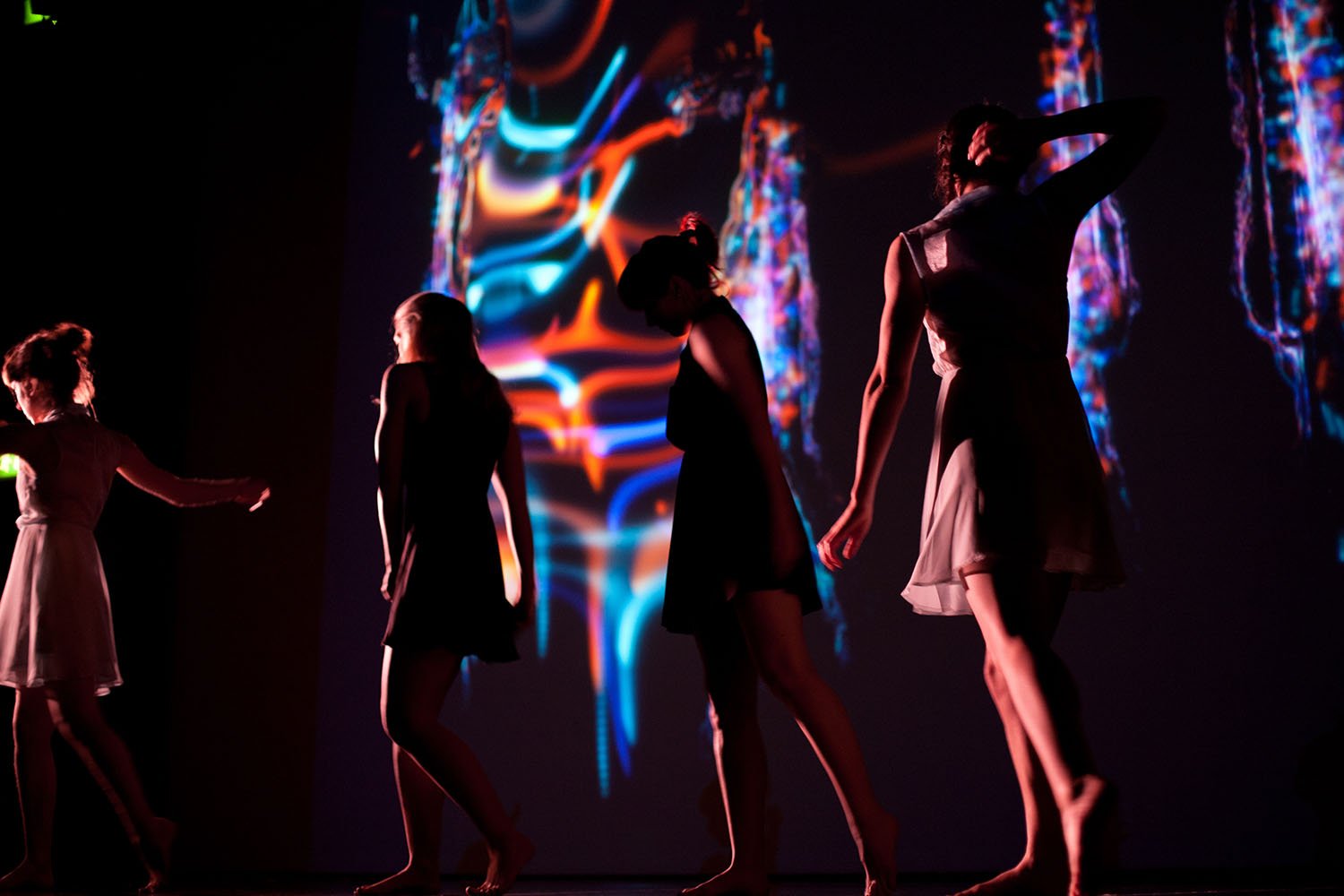Using rigorous methods from computational physics and state-of-the-art computing, Hidden Fields interprets dancers as fields whose movement creates ripples and waves in an invisible sea of energy
Multi-award winning digital dance performance Hidden Fields is the first dance show commissioned using the danceroom Spectroscopy (dS) technology. It is a unique sci-art collaboration bringing together gaming, science, dance and people.. This augmented dance project gives people the chance to see how their energy fields interact with the otherwise invisible atomic world.
Fusing 3d imaging and rigorous quantum mechanics, dS transforms people into energy fields and lets them wander through the nano-quantum world, where they trigger sounds and images. There’s no limit on the number of “players”, and the more they cooperate, the more engrossing it becomes. This fusion of rigorous science, self composing soundscapes and incredible generative visuals has led to the development of a new choreographic language that pushes the boundaries of our relationship with precise movement, science, spacial awareness and art. Hidden fields was developed through a unique collaboration between a talented group of scientists, artists, and engineers.
It offers a unique and subtle glimpse into the beauty of our everyday movements, allowing us to imagine how we interact with the hidden energy matrix and atomic world which forms the fabric of nature, but is too small for our eyes to see. It’s as much a next-generation dance piece as it is an invitation to contemplate emergence, dissipation, and the interconnected dynamism of the natural world – from the microscopic to the cosmic.
Hidden Fields images by Paul Blakemore
“Hidden Fields combines cutting-edge interactive digital art with rigorous molecular dynamics. This extraordinary performance has dancers, computers and physics playing off one another by transforming dancers’ movements into energy fields that create disturbances in simulations of molecular dynamics. In this way 21st century science and technology offer a unique glimpse into the beauty of our everyday movements.” Arthur I Miller (https://www.arthurimiller.com/additional-artist-scientists/david-glowacki/)
Hidden Fields was developed through a series of workshops at the Arnolfini (Bristol, UK), where it premiered on 21st July 2012. Since, it has won Royal Television Society Digital Innovation Award 2012, Media Innovation Award for Best Digital Innovation, and best Exhibition 2013, a University of Bristol public engagement award, and anHonorary Mention for the Prix Ars Electronica. The 2012 and 2013 versions of the show featured at the 2012 Cultural Olympiad, the Barbican (2012 and 2014) ZKM, Arnolfini, Kientica Art Fair, World Science Fair New York and Bath Spa University.
The name “Hidden Fields” was chosen to emphasize the performance’s intention to provide a glimpse into the energy fields in which we are embedded, but which we cannot see with our naked eyes. Hidden Fields is a complex and non-traditional performance, with every part (physics, graphics, sound, movement) impacting every other part. It operates with a rolling team of contributors whose specialties span research science, computer science, visual arts, composition, sonic technology, and dance.
The first version of Hidden Fields was shown in Bristol (UK) on 21st July 2012 at the Arnolfini, with contributions from David Glowacki (project lead), Phill Tew (visual artist), Joseph Hyde (sound), Thomas Mitchell (sonic interaction design), Laura Kriefman (choreography), Lisa May Thomas (dance), Emma Harrie (dance), Isabelle Cressy (dance), Kerry Trevaskis (dance), Kathleen Downie (dance), James Price (programming), Simon McIntosh Smith (high-performance computing), Nathan Hughes (film), Jacob Parish (film), and Paul Blakemore (photography).
The second version of Hidden Fields was shown in Bristol (UK) on 25th October 2013, in a 360-degree immersive projection dome, at an event produced by the Watershed with a range of additional sponsors. Contributions came from David Glowacki (project lead), Phill Tew (visual artist), Joseph Hyde (sound), Thomas Mitchell (sonic interaction design), Sarah Warden (production), Laura Kriefman (choreography), Laila Diallo (choreography), Phoebe Baker (costumes), Lisa May Thomas (dance), Emma Harrie (dance), Miyako Asano (dance), Tomomi Kosano (dance), Micheal O’Connor (programming), James Price (programming), Simon McIntosh Smith (high-performance computing), Nathan Hughes (film), Adam Laity (film), and Paul Blakemore (photography).












